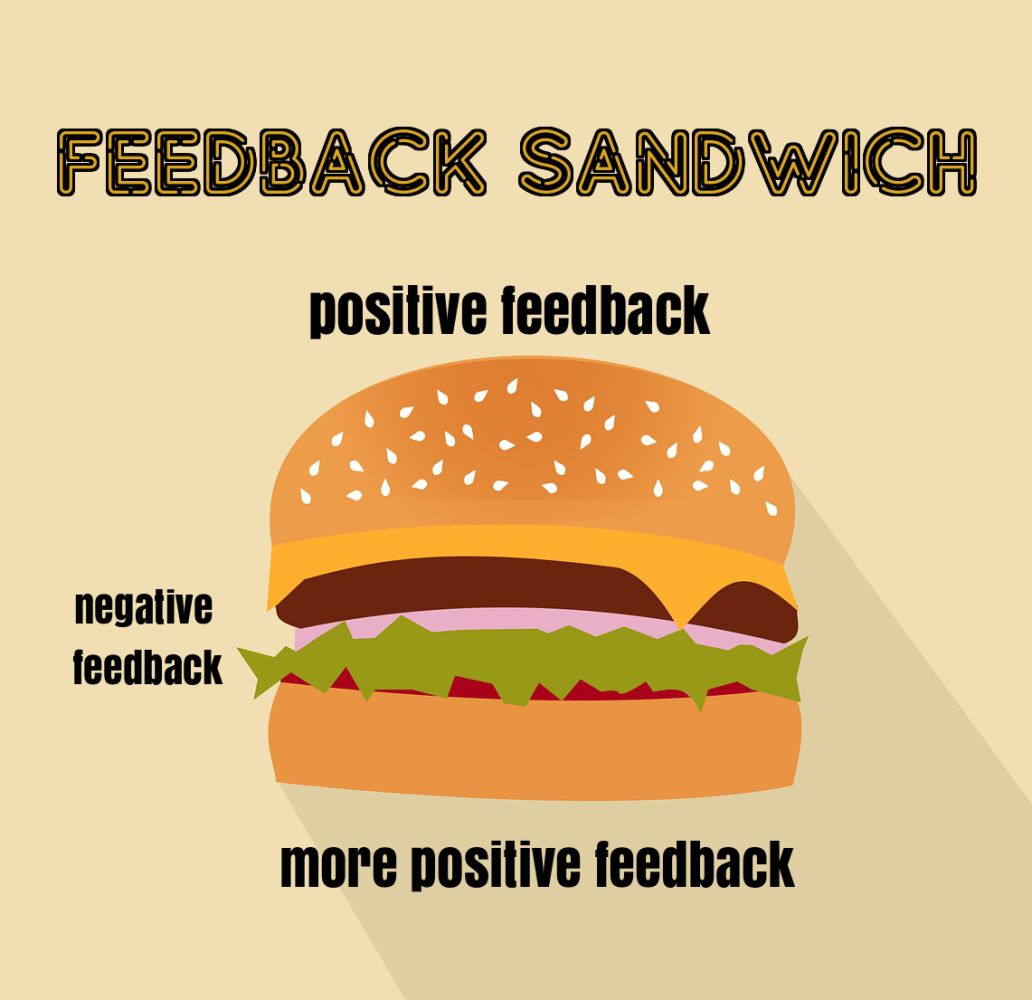
How to give Positive Criticism
How can we give positive criticism without discouraging volunteers and co-workers?
We all need feedback to improve
In the open source world, sharing knowledge is the key to learning and growing the community. Giving positive compliments are great. People love:
“Great job!” , “ Thank you for your time!”, “ This is incredible!”.
After all, open source contributors are all volunteers and we want to encourage them to contribute more often. But what if we see another solution that can simplify the code to make it more efficient? How do we convey the message so as not to discourage new contributors?
Or when you’re organising an event and would like to give constructive feedback to a new speaker. How do you tell them without hurting their feelings?
In one of the meetups I’ve organised few years back, there was a talk from a non-native speaker sharing his experience on how he solved a code problem. During the Q&A session, an experienced programmer passed a remark: “I don’t think the way you code is optimum. I think you should do this -… for your code.”
Sounds helpful isn’t it? But imagine yourself in the shoes of the speaker who is:
- Not a native English speaker
- First time speaking
- An intermediate programmer
This person could be
- fighting the fear of speaking in public,
- feeling stressed in front of experienced programmers,
- processing his thoughts and translating them in English.
Suddenly this feedback tells him what he presented seems not to be good enough. Will he take this criticism positively or will he just feel like s*** and never want to present again?
Everyone recognises that feedback is useful but no one likes to be criticised. We know there is always more than one solution to a problem. The feedback the experienced programmer gave was a kind of criticism that was accessed beyond the speaker’s perspective on how to solve a code problem.
The experienced programmer’s intention was to help improve the speaker’s code. He probably didn’t want his criticism to hurt the speaker’s feelings or narrow his drive. But the truth is, he most likely did.
It was how his criticism was delivered.
I’m sure everyone remembers certain criticisms you’ve received at some point in your life on something you’ve done. Even though you will agree that feedback is good, recalling memories of criticisms you received somehow make you feel wounded and fragile again.
Providing constructive feedback that is positive at the same time can be tough. What you say could be heavily criticised or perceived in a wrong manner. Whether it’s a simple comment on Twitter, Github, email or any other social media channels. So how can you give a positive feedback without being misunderstood?
Difference between positive and negative criticism
Criticism can be positive or negative. It all depends on how the message was delivered. Here’s how I see the difference.
Negative Criticism
Negative criticism focuses on finding the flaws. It is always easier to find out what’s not right and comment about it.
If the feedback you give is dogmatic, personal or unbalanced (like you only tell them your side of the story), you’re not helping. People feel clever when they spot an error or know a faster solution on how to solve it. So they are eager to voice that out. Being that person might make you feel superior at that moment but it could also make you look arrogant.
Positive Criticism
If you give feedback that is useful for the person to improve in certain perspective, it is a good feedback. Even if it the feedback is negative, if delivered properly at the right time with the correct approach, it will turn into positive criticism.
Let’s use an example of a tweet I posted previously about creating homemade irrigation system for my plants:

If I post a question on this photo and quote:
Do you like the irrigation system I create?
The comments can only be binary. Like or dislike. Let’s filter out the “like” comments and concentrate on only the “dislike” comments. If I receive 4 dislike comments like :
- I think this is stupid
- Don’t think this will work
- Don’t like it at all
- Don’t think it will work well. If you lift the bottle higher, shorten IV tube, it will work.
Comments 1-3 are all negative criticisms that are personal or unbalanced. But comment 4, although it disagree with what I create, it tells me how I could improve on it. So even though I may feel a little lousy, I can still accept the criticism as it is constructive and it tells me how I can improve on it.
Constructive and Positive Criticisms
They both sound similar isn’t it? In the book Power Of Positive Criticism by Hendrie Weisinger, he mentioned
Both constructive and positive criticism share the goal of achieving results more efficiently. However, constructive criticism aims to show how something can be done in a better way, using an alternative approach to the current one. It’s suggestions to address the issue straight up without delay or generalizations.
Positive criticism, on the other hand, starts by drawing attention to a positive aspect of the issue, rather than going straight for the kill.
So in short, constructive criticisms can be negative criticisms if they are not delivered with the right approach at the right time.
Ways to Deliver Positive Criticisms

The Sandwich Method
This is a very popular approach and will be highly effective if done right. Sandwich method simply means putting the constructive criticism wrapped in between specific praise statements. You start your feedback with a positive remark on something performed well. Proceed to work in your criticism, and then wrap up the input with another positive note on how the receiver can improve it. While this is popular, it might not always be appropriate though. All situations requires case by case basis.
Try writing out your feedback by listing what your positive praise will be, the area of improvement you will suggest focusing on and another specific praise for something done well or above expectations.
Avoid Being Personal
When providing positive criticism, it’s best to focus on the action, not the person. For example, if you think one of your collaborators has been using a time-consuming method to deliver his work and you know a faster and more effective way, you would focus on what plan of action could be taken to help your collaborator increase their productivity.
Consider using non-specific language such as “the formula,” “the project” or “the tools” rather than “your formula,” “your project” and “your tools”.
So instead of saying, “The way you code is too disorganised.” you can rephrase that as, “This code can be better structured.”
Consistently delivering criticism that emphasises “you” rather than focusing on the issue can sometimes lead to less morale and productivity overall.
So if we go back to the scenario mentioned above when the experienced programmer said, “I don’t think the way you code is optimum. I think you should do this -… for your code.”
He could rephrase that as, “I see why you are structuring the code this way. There is another possible solution to resolve this problem that might save a few steps …”.
The objective approach allows you to address the issue without the person feeling personally incompetent.
Be Specific
Being transparent and specific in your positive criticism is crucial if your goal is to help the person receiving the feedback improve their performance. State the feedback clearly and directly, without being rude or uncaring.
To provide positive criticism, let the person know what the issues are by giving specific details of what you think could be improve. Be sure to get to the point quickly to avoid confusing the person.
“The report was exceptionally well research and written. However, I felt like it could have been more effective had there could be more case studies included in it. With all the solid research data you’ve gathered, the audience would be more engaged and relatable with case studies included.”
Be Honest and Sincere We are often self-conscious when our work is under the microscope. Make it clear you are keen to help the person improve, rather than finding faults in the person.
Encourage self-reflection Engage with the person; ask for their thoughts on what they do, why and how they derived their actions. It could be that their actions were justified and that your perception is incomplete.
Listen One of the most important things I learned while teaching or managing people is to listen. Positive criticism is a fantastic opportunity to coach and guide a person.
Feedback needs to be in the form of a dialogue. This ensures the person receiving your feedback is going to fully understand the points you’re trying to convey and how they can improve.
You may be as nervous as the person you are giving feedback to, and that may cause you to talk too much. Stop and listen.
You should allow the person to explain their side of the story and ask questions regarding the issue and how to fix it. You may even end up learning some information that’ll help you provide tailored feedback and advice. Taking time to understand their position will create empathy and deeper insight.
Address Actionable Issues Only Let’s be realistic here. You can’t expect to change something that’s unchangeable – this will only lead to frustration on both sides. Instead of discussing personal traits, focus your positive criticism on matters that can be improved.
For example, when organising an event, if one of the sponsors left out and was not featured on the social media posts, discuss with the person in charge to understand how to prevent such problems from happening again instead of blaming the person how he/she messed it up.
The Wise Feedback Preface Research by a team of psychologists from Stanford, Yale, Columbia called the Wise Feedback paper which was also popularised by Daniel Coyle explored the following “magical feedback”:
“ I’m giving you these comments because I have very high expectations and I know that you can reach them. ”
This single phrase with only 19 words actually proved to have increased the motivation of the students in the study by 40%! This phrase is not really a feedback but a preface. Students who got this encouragement preface were more eager to do something with the feedback they received.
Using this framing when providing feedback helps to build trust, signal a sense of belonging, and combine high standards with the assurance that people can reach them.
It is important for feedback givers to know that ultimately what we are trying to communicate to people is useful information. This 19-word preface inoculates the receiver from thoughts like “I’m not good enough.” or “You don’t think I am doing it right.” It redirects the feedback receiver from feelings of inadequacy to feelings of confidence.
I hope this little article helps you to provide more constructive, positive criticisms in the future and help nurture the community!
I’m going to end my article with the quote from Daniel Coyle:
There’s no moment more important than the moment feedback is delivered. Do it correctly, and the learner takes a step forward. Do it poorly, and the reverse happens.